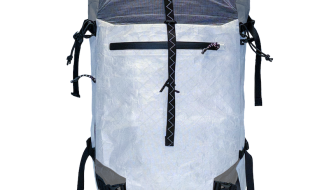The 13th annual Winter Wildlands Alliance Backcountry Film Festival is ramping up for its mid-November premier in Boise, Idaho, with over 100 tour stops planned internationally for winter 2017/18. Since the first festival in 2005, comprised of a one-film screening, things have evolved into a 90-minute show of films selected by Winter Wildlands Alliance staff members. And while films can be submitted from any country, they must all share a common theme—the human-powered backcountry winter experience. To learn more about this year’s festival, we chatted with Keili Bell, the Backcountry Film Festival Producer and Winter Wildlands Alliance Events and Outreach Coordinator.
Backcountry Film Festival 2017/2018 National Tour from Winter Wildlands Alliance on Vimeo.
Backcountry Magazine: What purpose does the Backcountry Film Festival serve?
Keili Bell: The Backcountry Film Festival tours nationally and it serves as a gathering place and celebration of the human-powered recreation experience. It’s produced by Winter Wildlands Alliance—a national organization that inspires and engages human powered recreationists to steward and care for their public lands and the winter backcountry experience.
BCM: What inspired the formation of the film festival?
KB: The film fest began with a group of Winter Wildlands Alliance staff in Idaho, where we screened “Sanctified” by KGB Productions. The hope was that the film screening would generate a sense of community and what it means to be winter human-powered recreationists. We saw the need to gather people together for this cause, so we brought select films together under the title of the Backcountry Film Festival and offered them to grassroots groups across the country as an outreach and fundraising tool.

Mark Ortiz skis with the Teton Mountains as a backdrop for the “Idaho 12ver Project.” [Photo] Jed Mumm
KB: We’ve seen an overall shift of focus in the outdoor recreation community. The common theme and undertone of conversation is, “How do my values and actions as a skier or boarder or alpine climber affect society as a whole?” Last year, the premiere screening took place a week after the presidential election, and there was an overall sense of fear in the community. We were curious about how this sentiment would affect not only our celebration but also the overall need to come together for our public land.
We were happy that the night of the opening premiere had incredible high energy. There was a sense of deeper caring for one another in the room as well as a caring for our nation as a whole. This was pervasive in the rest of the tour. We see with each local screening this need to come together and connect with the environment and with each other. And subsequently, this feeling has generated a fire and desire to strengthen our community both on a local and national level. Through our network, the Backcountry Film Festival serves as a way to raise funds for our national SnowSchool program, which connects over 35,000 children each year with their local winter environment and provides youth the tools to monitor global climate trends. Over half of SnowSchool participants are underserved youth and a majority are experiencing snow sports for the first time. With our film festival, we want to provide the greater community the means to experience and access public lands.

On set for “The Space Within.” [Photo] Oskar Enander
KB: I see a trend with filmmakers working to connecting their videos with the heart and soul of why we venture into the backcountry. There’s a shift in the mission of these films—we’re moving toward cause-based films. Many of them work to engage the next generation, showcase the importance of preserving open space for future generations to experience what it means to travel in the winter backcountry and capture what it means to experience solitude. Another trend I see is recognizing and organizing for climate action. And finally there is a movement toward bringing the sport back home—back to the roots of why we recreate in the backcountry rather than what we do in the backcountry.
BCM: What was the impetus for engaging nonprofits in the film festival?
KB: We want these tour stops to be a place for local grassroots nonprofits to share their message and local projects with their community. And while we have an international tour that goes to Canada, Antarctica, Australia, New Zealand and Chile, that’s an organic growth. Because the Winter Wildlands Alliance is a public lands advocacy organization, we primarily focus on offering this festival to nonprofits within the United States. We aim for 120 screenings this year and we are hoping to raise over $200,000 for local action.

Snapshot of Jane Zelikova, profiled in “The End of Snow.” [Photo] Morgan Heim










Related posts: